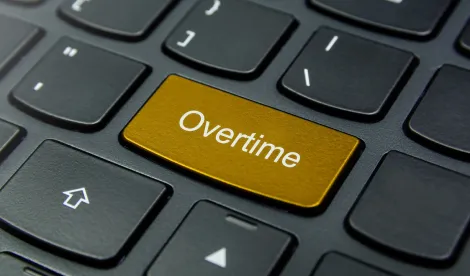After much anticipation, on September 24, 2019 the U.S. Department of Labor (DOL) announced a final rule that would change the minimum salary that white-collar employees must be paid to qualify as exempt from the overtime requirements under the Fair Labor Standards Act (FLSA). The final rule takes effect on January 1, 2020 and raises the current minimum salary level for exempt employees from $455 per week, or $23,660 annually, to $684 per week, or $35,568 annually. This is similar to the proposed rule issued in March 2019 and was generally considered non-controversial – unlike more dramatic changes that were proposed in 2016 which would have raised the minimum salary level to $47,476 but never took effect.
This final rule will still have a significant impact on employers. In fact, the DOL estimates that 1.3 million additional U.S. workers will be eligible for overtime in January. The DOL also estimates that workers will receive an additional $298.8 million in extra pay each year once the new rule is implemented.
Under current DOL regulations, most white-collar employees – executives (supervisors), administrative employees and professionals – are exempt from the FLSA rules and need not be paid overtime for workweeks in which they work more than 40 hours if they satisfy the following two conditions: (1) they must perform what the DOL has defined as "exempt" duties; and (2) they must receive a guaranteed salary of at least $455 per week or approximately $23,660 annually. The final rule just announced by the DOL only changes the minimum salary requirement.
Key features of the final rule are:
-
Raises the salary threshold necessary for a white-collar employee to qualify as exempt to $684 per week or $35,568 annually, which is set at the 20th percentile of weekly earnings for full-time salaried workers in the lowest income census region (currently the South);
-
Does not change the duties tests, which also must be met for a white-collar employee to qualify as exempt;
-
Provides that up to 10 percent of the standard salary level may come from non-discretionary bonuses and incentive payments (including commissions) that are paid at least annually;
-
Raises the salary threshold necessary to qualify for the highly compensated employee exemption from $100,000 to $107,432 annually, which is the equivalent of the 80th percentile of full-time salaried workers nationwide. To qualify as a highly compensated employee, an employee must also receive at least $684 per week on a salary or fee basis exclusive of bonuses and incentive payments; and
-
Sets forth no automatic updates to the salary thresholds. The final rule provides that the thresholds will be updated more regularly (but not on any set fixed interval) in the future after notice and an opportunity to comment on any proposed changes before they are implemented.
Since the rule has become final, employers should review their workforces to determine what changes, if any, may be necessary in preparation for the January 1, 2020 effective date. Possible considerations include raising the salary of employees who meet the duties test to at least $35,568 annually to retain their exempt status; converting employees to non-exempt status and paying the overtime premium of one-and-one half times the employees' regular pay rates for all overtime hours worked; or converting employees to non-exempt status and eliminating or reducing the amount of overtime hours worked by such employees.




 />i
/>i

